This Fall, we mark five years since the establishment of the Southeast Asia Neighborhoods Network (SEANNET), a network established at IIAS with core funding from the Henry Luce Foundation in New York to better understand cities in Southeast Asia through the lens of city neighborhoods.
In this Focus section, we and our SEANNET partners reflect on the first five years of SEANNET, but we also look forward to the next phase, for we are very happy to announce that the Henry Luce Foundation has confirmed funding for a second and larger phase, entitled the Southeast Asia Neighborhoods Network 2.0: Communities of Learning, Research and Teaching Collaborative, or “SEANNET Collective” for short. Whereas SEANNET 1.0 was led from IIAS, SEANNET Collective will be led from the Singapore University of Social Sciences, with Rita Padawangi as the overall coordinator.
The expansion of the network comes at a critical time for cities in Southeast Asia, as is explained in more detail in the “Significance of SEANNET” section below. Not only is the coronavirus pandemic altering the life of millions (as in the rest of the world), but political turmoil and insecurity reigns in many countries of the region, which tends to affect poor urban dwellers the hardest.
In what follows, the co-coordinators of SEANNET 1.0 introduce the objectives and approach of the network, expand on the larger trends mentioned above, and invite the principal investigators of the six SEANNET 1.0 study sites to reflect on a central question: “What have you learned about cities in general, and your city in particular, through the neighborhoods you have been studying in the past five years?” Each team has approached this question differently, and this Focus section brings their voices together in the form of seven essays and accompanying images that appear after this introduction.
About SEANNET
SEANNET supports the development of contextualized knowledge about urban life in Southeast Asia. The program aims to provide an epistemology of the city that is different from conventional top-down (“expert-subject” oriented) studies. It does so by unearthing new, multi-disciplinary knowledge about cities in Southeast Asia and re-assessing them through the methodological lens of what happens at the micro-urban, neighborhood level. The local research and findings will help to frame the development of a new urban pedagogy, in the form of Southeast Asia-specific urban theories and methodologies that can be applied both inside and outside the classroom.
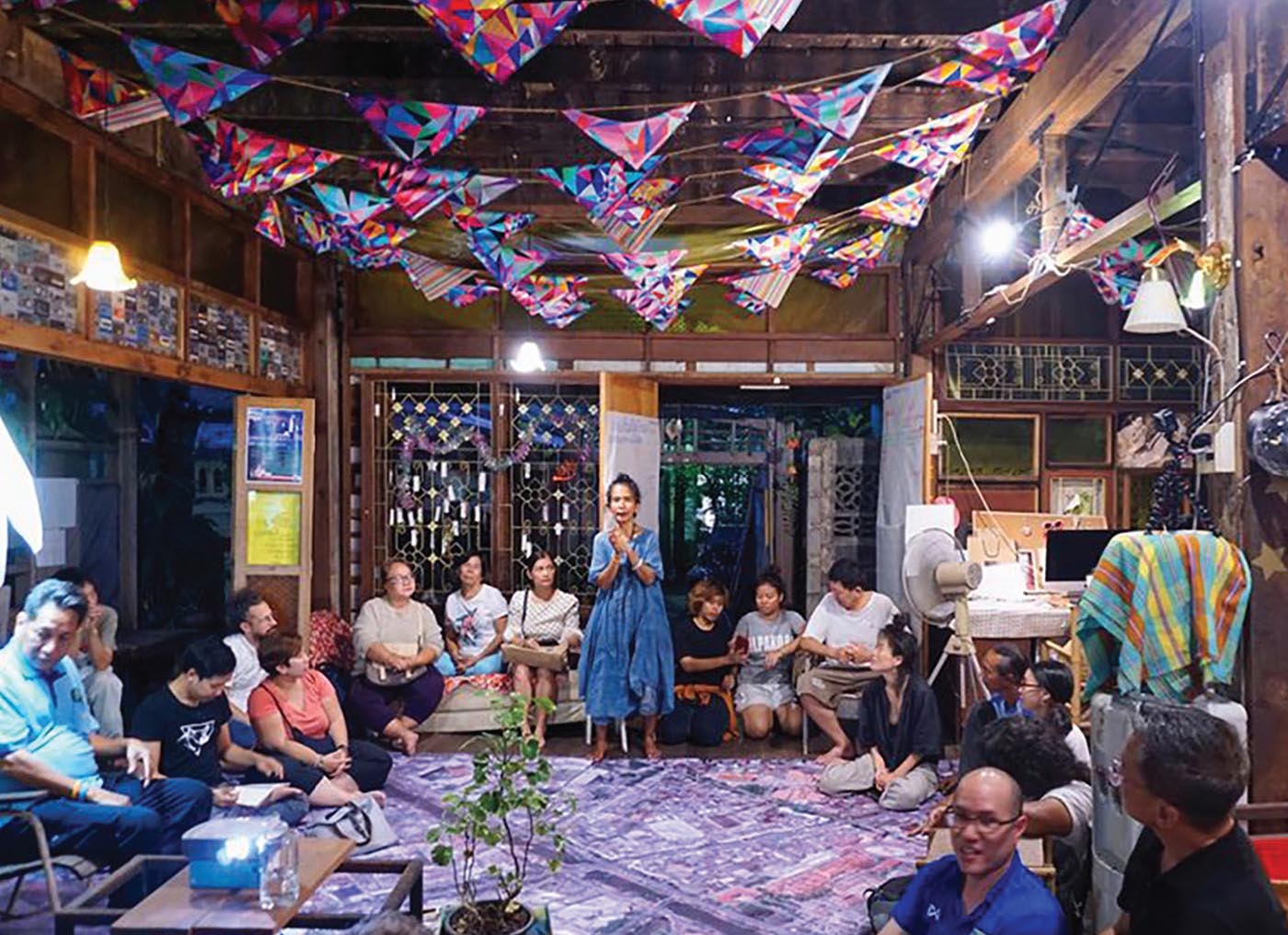
Fig. 1: A community meeting for thefestival preparation at Dance House in the neighborhood of Nang Loeng, Bangkok.
In studies of “Asia,” Southeast Asia is often eclipsed by its larger neighbors (i.e., China, Japan, and India), which have traditionally commanded more attention from scholars. Moreover, many of the urban theories in Southeast Asian research and university curricula are still based on classical Western theories of the city, which do not capture the distinctiveness of urbanization and social life in the region. SEANNET was established to address these gaps and more. In the process of uncovering this “new knowledge” about cities in the region, SEANNET seeks to bridge theory (institutional knowledge) and practice (sites of knowledge) to bring about transformation on the ground in both institutions and communities.
IIAS’ regional partner in SEANNET (and lead partner in the second phase under SEANNET Collective), Singapore University of Social Sciences, represents this emphasis on bridging theory and practice: as the newest autonomous university in Singapore, SUSS distinguishes itself from other traditional research-driven universities by adopting an applied educational approach in its curriculum design and teaching, with special attention to community-based learning.
In seeking to institutionalize this field-based approach, SEANNET engages in partnerships with multiple research centers and universities in Southeast Asia, Europe, and the United States that have a similar mission, as well as with the IIAS-based Urban Knowledge Network Asia (UKNA) and Humanities Across Borders (HAB), both of which share this vision to effect social change through new knowledge creation.
To help achieve its goals, SEANNET seeks to shape and empower a community of early career scholars and practitioners working on and/or from Southeast Asia, who will contribute to the growing body of social science and humanistic knowledge on Asian cities.
Six historic neighborhoods in five countries were selected as case studies during SEANNET 1.0: Thingaza Chaung in Mandalay (Myanmar); Wua Lai in Chiang Mai (Thailand); Nang Loeng in Bangkok (Thailand); Ward 14 in Phú Nhuận district in Ho Chi Minh City (Vietnam); Escolta Santa Cruz in Manila (Philippines); and Kampung Peneleh in Surabaya (Indonesia). In each project site, SEANNET consists of a team of local researchers, which is headed by a local and international principal investigator, with ties to local universities, communities, and non-governmental organizations. In the second SEANNET phase, under the SEANNET Collective, at least six additional project sites will be added with the aim to eventually cover all countries in Southeast Asia.
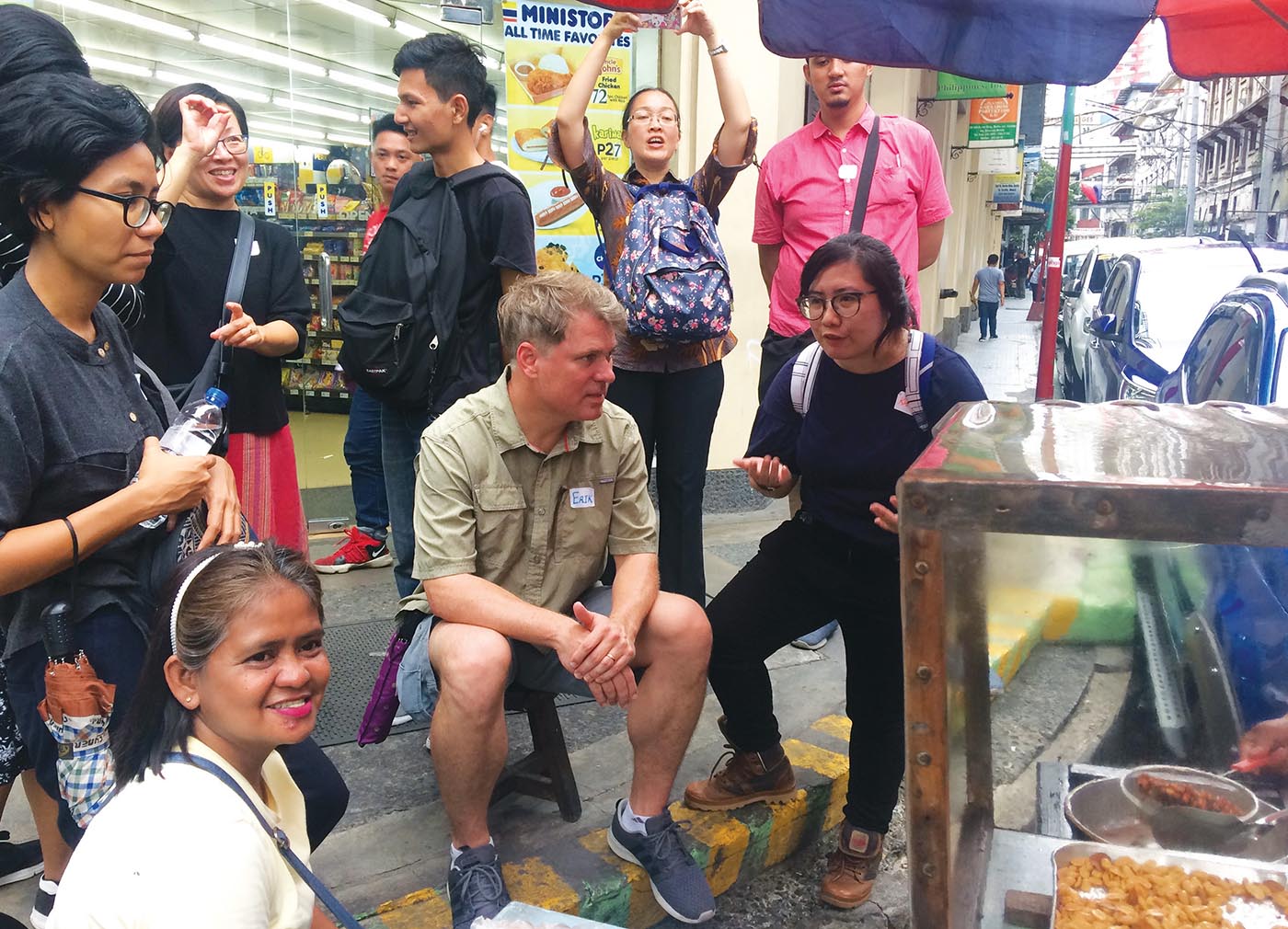
Fig. 2: SEANNET partners discovering the Escolta neighborhood. Part of the SEANNET workshop in Manila, 2019.
The Significance of SEANNET
SEANNET responds to several important underlying trends in Southeast Asia, which have huge implications for the lives and livelihoods of ordinary residents in urban neighborhoods in the region. The first trend is a new “developmentalism” that threatens to physically wipe away many neighborhoods and their residents in the name of highest and best land uses. The second refers to the globalization of institutions of higher learning, which threatens to figuratively erase these same neighborhoods and residents from urban studies curricula. A third and more recent development is the COVID-19 pandemic that places constraints on research, teaching, and learning which require close contacts with residents and communities. As SEANNET teams were already in place before 2019, they have been able to document the significant impact of the pandemic on social and economic life in their neighborhoods.
A New Urban Developmentalism
We use the term “developmentalism” to refer to a tendency of city and national governments to disproportionately invest in economic development and prestige projects at the cost of other priorities, particularly public goods with social and environmental objectives. Cities, and especially national capitals, are often the canvas for large infrastructural and real estate projects, with inadequate provisions for social or environmental amenities. In the search for maximum profits or city beautification (which aids in city marketing for future investments), older and/or poorer neighborhoods in Southeast Asian cities are increasingly making way for new developments, either immediately or in the medium term through gentrification. As these neighborhoods face market pressure, their social fabric and very identities are put under severe strain. 1
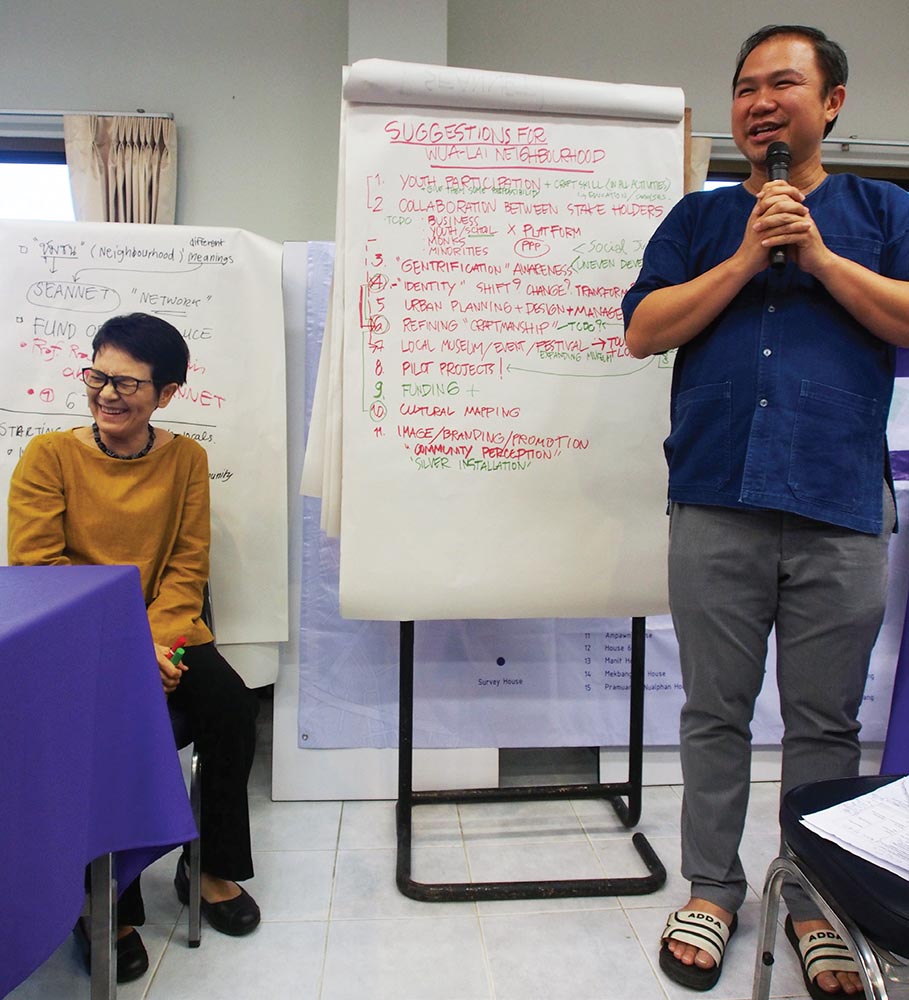
Fig. 3: Suggestions for the neighbourhood at the Chiang Mai local forum on 20 July 2018.
This is the fate befalling several of the SEANNET neighborhoods. In the study site of Nang Loeng, in one of the oldest areas of Bangkok, the construction of a nearby metro station is leading to intense redevelopment pressure. This has already displaced many tenants and certain cultural activities, which previously made use of open spaces in the area. As the Nang Loeng essay in this Focus makes clear, the neighborhood is now the setting for competing cultural events—those driven mainly by various outside organizations aiming to put the neighborhood on the tourist map and to better “market” the area, and those with the genuine participation of residents aiming to use local social, cultural, and human capital in an effort to attract the support of allies in their struggle to remain in the city as a vibrant community.
In Phú Nhuận district in Ho Chi Minh City, redevelopment pressure is less immediately threatening to the residents—and even represents an economic opportunity for some—but nevertheless also risks having a big impact on the social fabric of the community as a whole. As a result of upgrading of the banks of the neighboring Nhiêu Lôc-Thi Nghè canal, the canal zone in Ward 14 now forms a bustling commercial space. Furthermore, as the neighborhood becomes increasingly sought-after, it faces pressures in the form of new real estate developments, such as apartments for sale and houses and offices for rent, including short-term rentals for Airbnb. The SEANNET Ho Chi Minh City team hypothesizes that the increasing land values contribute to reframing what a neighborhood means today in Vietnam. 2
Corporatizing Institutions of Higher Learning
If redevelopment pressure is a direct threat to neighborhoods in Southeast Asian cities, then the effects of the growing corporatization of institutions of higher learning in the region represent a more indirect but perhaps equally existential threat. The growing commercial direction of many universities brings with it several linked developments, such as the hollowing out of public universities (and classical education programs aimed at “student citizens”) in favor of privately-run corporate universities (catering to “student consumers”), as well as the growing importance of university rankings and an intense competition to publish. 3 Universities worldwide are cutting or scrapping their humanities and social science programs as students become increasingly skills-oriented, and this is certainly the case in Southeast Asia. The result is that the main entry points for studying everyday lived realities in the region’s cities—through ethnographic methods in anthropology and sociology, for example—are rapidly dwindling. Cuts to history departments, cultural studies, and the arts further reduce entry points for better understanding and valuing community life. Such cuts in arts, humanities, and social sciences perpetuate technocratic perspectives of managing cities, as students are directed to become a labor force in profit-driven industries that shape cities as collections of entrepreneurial projects to accumulate profit. This direction contradicts the need to cultivate students with empathic understanding of the social and cultural lives of cities. With decreased knowledge about urban community life will come a longer-term lack of appreciation for this vital part of the city, leading to further invisibility and political neglect, or worse.
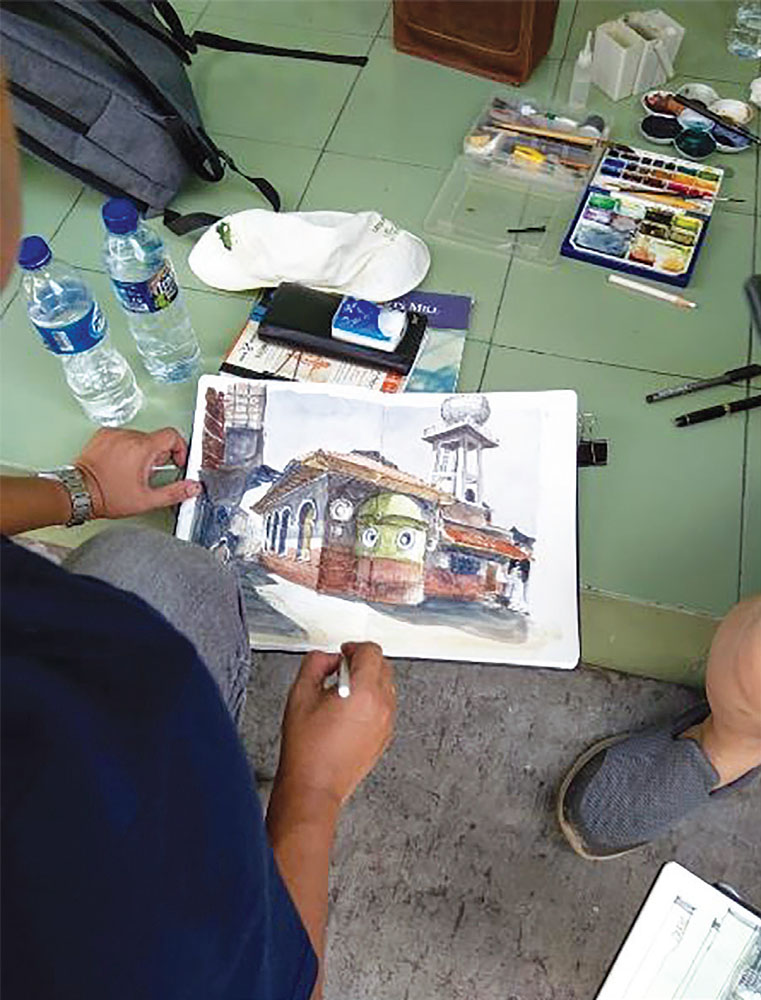
Fig. 4: Sketch of Masjid Jamik Peneleh done by Jonathan Irwan during a public sketching activity, in which residents from the neighboyrhood of of Kampung Peneleh in Surabaya, passers-by, and the sketcher interacted through art to construct temporal social spaces. This image was first posted on the SEANNET blog announcing the release of the sketchbook Peneleh Dalam Sketsa, available for free PDF (with watermark) download.
In the essay of the Surabaya team, Adrian Perkasa (local principal investigator for the Kampung Peneleh neighborhood), makes a strong case for an ethnographic approach when he writes that “careful study and engagement with local residents,” based on “sincerity and compassion,” are necessary to “better understand the current urbanization processes at work and the ways in which local populations are resisting urban “supersizing” when these effectively lead to the destruction of the local social fabric.” The Chiang Mai team shares a similar sentiment, as Komson Teeraparbwong writes in his essay about the need to have a keen eye on the world of the neighborhood, to be attentive to the small scale in order to learn about the whole. These principles and values are under threat in the model of the new corporate university, which is very likely to promote the kind of technocratic, top-down “citadel expertise” that Perkasa objects to in his essay because it is presumed to be more time-efficient.
The Impact of COVID-19
The advent of the coronavirus pandemic in early 2020 presented a shock to SEANNET neighborhoods as much as it did to the SEANNET teams themselves. Pandemic-related social restrictions meant that SEANNET 1.0 could not complete its scheduled in-person workshops in 2020 as previously planned. SEANNET 1.0 eventually obtained a no-cost extension from the Henry Luce Foundation to continue until December 2021, though even in 2021, SEANNET has had to continue with online-only meetings and local initiatives in the neighborhoods.
For our neighborhoods, the pandemic has proven to be a double-edged sword. The sudden collapse of the tourism economy, disruptions to the schooling of children, and the curtailing of many livelihood opportunities and businesses have produced unemployment and misery for many households. On the other hand, the pandemic has also provided evidence of community self-help and solidarity in many of the SEANNET neighborhoods.
As the essay by Jayde Roberts, international principal investigator for the Thingaza Chaung neighborhood in Mandalay illustrates, in the face of Myanmar’s military junta banning unofficial distributions of oxygen tanks, residents placed boxes of disposable masks and even oxygen tanks in front of their homes, accompanied by signs that invited passers-by to “donate if you have extra, take if you have need.” In Bangkok, the pandemic opened up spaces for local initiatives, as community leaders, with the help of external community architects, organized small initiatives to “help vulnerable residents to cope with the impact of the pandemic,” including community kitchens and food and medicine to mitigate the impact of the pandemic.
In their own words: “What have we learned about the city through the neighborhood?”
The seven essays in this Focus section reflect seven very different perspectives on a central question for SEANNET after the end of the first phase: “What have we learned about cities in general, and our cities in particular, through the neighborhoods we have been studying during the past five years?”
Given the decentralized nature of SEANNET, each team has considerable freedom to determine its approach to its study site. In SEANNET 1.0 these approaches reflected the backgrounds of the principal investigators, the composition of each team, and the reality on the ground. This diversity is captured in the present set of essays.
In the first essay on Kampung Peneleh in Surabaya, Adrian Perkasa, a historian by training, observes that the traditional methods used by historians to gather information about their subjects (principally the use of archives) were largely ineffective in Peneleh due to the limited availability of written records. Instead, the SEANNET team resorted to experiential, dialogical, and ethnographic methods to unearth new knowledge about Peneleh directly from residents. These methods included organizing old photo competitions, public mapping, sketching activities (together with a local group of sketchers), and community-engaged research. To build the trust of residents and make contacts, the SEANNET group invited local student team members to live in the neighborhood for extended periods of time. Perkasa’s essay ends with a call for urban studies scholars to learn from spontaneous settlements in cities and to be open to reflexive thinking and the “non-linear narratives” of cities.
The second essay, by Tessa Maria Guazon, Alma Quinto, and Nathalie Dagmang on the Escolta Santa Cruz neighborhood in Manila, is a similar heartfelt call to look at a city differently, through the daily lives and struggles of its residents, and to deploy tools of community engagement to build trust and get closer to the target group. In the Escolta case, these residents are a community of homeless women who try to keep their “spots” on the streets by maintaining good relations with fellow street dwellers and vendors, building owners, and loyal customers. At the same time, they have more tenuous relations with the authorities, in the form of local politicians, the police, the clearing operation squad of the city government and the social welfare department. The “city” for the Escolta study team is a place shaped by continuous tactics and negotiations. It is a place without permanence or property. In their efforts to unearth these daily struggles for a “right to the city,” the Escolta SEANNET team emphasizes listening and reciprocity, building relations of trust, recording narratives and life stories, and organizing collaborative workshops with the homeless women.
Another site where a SEANNET team has studied the competition and constant negotiation for space is in Ward 14 of Phú Nhuận district in Ho Chi Minh City. The essay by Marie Gibert-Flutre describes the use of “rhythmanalysis” as a critical method to investigate various uses of local space in the neighborhood and, in so doing, to uncover the (micro-)power relations that shape and reshape daily activities. The use of rhythmanalysis by the Ho Chi Minh City team represents one of the first times that the technique has been applied systematically in an “ordinary” neighborhood of a city of the global South, and it yields several specific insights. One of these is the very dynamic time dimension in the use of space. As the Escolta SEANNET team also found in Manila, local spaces are continuously negotiated and renegotiated by users. Nothing is permanent, as, for example, when vendors and street food hawkers (and the homeless) take over the same space at different times of day and night. A second insight is that there is no simple opposition between the formal and informal economy, as we need to distinguish between different degrees of informality. A third insight is that if we think of a neighborhood as a place of belonging, this belonging takes place unequally: whereas some actors have ‘strategies,’ others have to make do with ‘counter-tactics.’
For the Bangkok study team looking at the neighborhood of Nang Loeng, impermanence and the struggle for a right to the city are also familiar themes. In their essay, Boonanan Natakun and Napong Tao Rugkhapan describe a community ostensibly very different from the homeless women in Manila and the roaming vendors and temporary restaurants in Ward 14 of Phú Nhuận district. Nang Loeng is a well-established neighborhood in the historic heart of Bangkok, populated by families of former palace servants. However, these elite connections and Nang Loeng’s reputation as a center of traditional arts and culture are not protecting the neighborhood from growing redevelopment pressure unleashed by the construction of a nearby metro station and transit-oriented development hub. In the face of these transit plans, and the temptation for landlords to cash in on these market developments, Natakun and Rugkhapan observe how the community has resorted to “weaponizing” its local cultural practices as a tactic to claim housing security. Meanwhile, the authors also analyze how external actors, including state officials, local authorities, local educational institutions, and the Civil Society Tourism Network, are getting involved to help the residents generate income from tourism, with varying degrees of participation from the community members.

Fig. 5: Alma Quinto, Manila researcher, runs a workshop with SEANNET members in 2019 to sensitise researchers to the life experienced by their partner women vendors on the streets.
Just over 700 km to the north, another historic urban neighborhood in Thailand is also fighting to preserve its identity. By deploying its heritage and cultural assets as strategies to protect the community from market forces and land speculation, its community also seeks to earn a living from its heritage. In two essays from Wua Lai in Chiang Mai, Pijika Pumketkao-Lecourt, Komson Teeraparbwong, and Pranom Tansukanun describe how the historic village of silversmiths has found itself—for better or worse—at the center of tourism promotion initiatives, such as the Saturday walking street and a city government-designated “Conservation Area for Thai Art, Culture and Identity.” The SEANNET team has studied the differing approaches of two local Buddhist temples (wats) in this identity struggle: on the one hand, a more centralized model to develop and organize local silver craftsmanship for the benefit of tourism (Wat Sri Suphan) and, on the other hand, a more decentralized model, where residents are able to propose and manage cultural heritage projects in collaboration with the monks (Wat Muen San). As architects, the methods of the SEANNET Wua Lai team focused on reading and learning about the neighborhood through mapping, observing, sketching, and conducting interviews. Collaboration between students from Chiang Mai University and the Ecole Nationale Supérieure d’Architecture de Paris-Belleville in France has resulted in joint workshops and design studios.
In the final essay, written by Jayde Roberts, principal investigator of the Thingaza Chaung team, we turn to a neighborhood in Mandalay, Myanmar that has, more than the others, been rocked by external events. Residents of Thingaza Chaung, a low-lying neighborhood near the city center, are currently living in the aftermath of a coup d’état and subsequent civil unrest, as well as a serious coronavirus pandemic. These events have made SEANNET workshops in the neighborhood impossible and have also complicated the research efforts of the SEANNET team. However, the turmoil has helped to bring into focus a “hidden-in-plain-sight social infrastructure” (nalehmu) that has served the ordinary people of Myanmar well during decades of authoritarian rule, civil war, and humanitarian crises, as in recent months, when people have largely had to fend for themselves. This people’s infrastructure is informal but systematic. It enables neighborhood residents to help each other and create a sense of place and belonging. Roberts illustrates this social infrastructure in action through the example of Sabbath day practices in Thingaza Chaung during the rainy season retreat in the Buddhist calendar.
Conclusion: “Who is a neighborhood?”
The six essays in this Focus section illuminate many different aspects of the neighborhoods that were the study sites in SEANNET 1.0. What they have in common is that they all point to what is perhaps the missing piece of the puzzle: their people and the ties their residents have to one another. None of the six neighborhoods could be imaginable as entities without the people in their midst. Several of them are facing an existential crisis precisely because external pressures are threatening these social bonds.
In an article for a special issue of SEANNET and Asia Research Institute papers to appear next year, 4 Erik Harms (principal investigator of the Ho Chi Minh City team) concludes that:
There is no such thing as a neighborhood. But neighborhoods are everywhere. Neighborhoods are regularly described as things, but we cannot touch them. We typically understand neighborhoods as places, but we can neither see them nor find their edges. The more you stare at a neighborhood, the more it seems impossible to see it… In order to more properly understand the neighborhood… [we need to] take the social seriously. [We need to] place people and their relationships at the center of a project to develop a working understanding of the neighborhood. Instead of asking, ‘What is a neighborhood?’, [we should] ask, ‘Who is a neighborhood?’
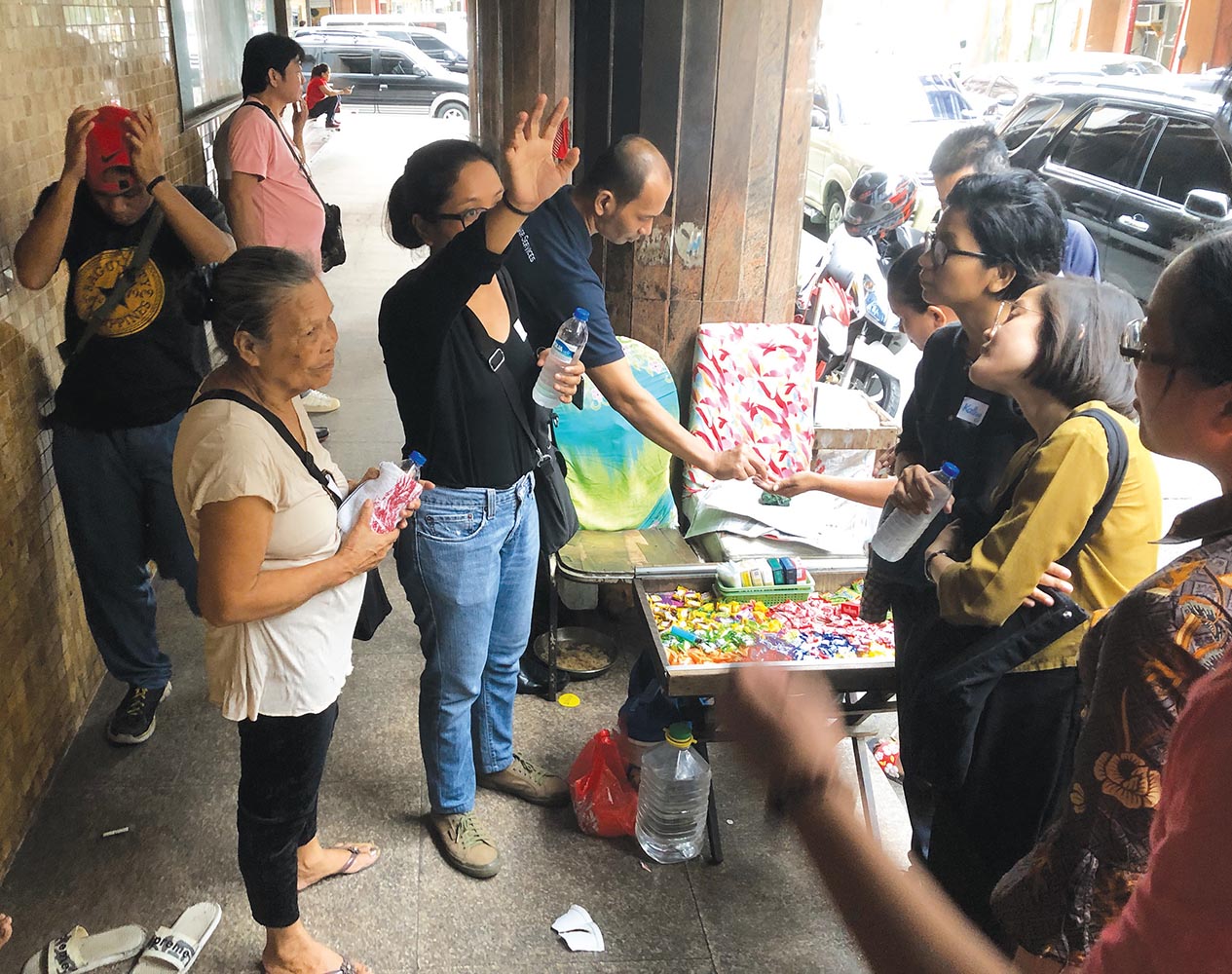
Fig. 6: Nathalie Dagmang, Manila researcher, stands next to one of the partner women vendors of the Manila Escolta study site in 2019, introducing SEANNET partners to the work-life conditions of the women street vendors. Behind her, someone makes a purchase from a vendor.
Echoing this sentiment, the Manila SEANNET team speaks for the other neighborhood teams when it concludes that “Our research allowed us to shift our focus from neighborhoods as geographically bound units towards an understanding of ‘neighborliness,’ or what we and our women partners call ‘attitudes of being neighborly.’” It is this contribution that SEANNET—in its initial phase and its continuation as SEANNET Collective—makes to the field of urban studies: to study cities calls for one to engage with the people, in order to better understand the patterns and processes of urban life and its spaces.
Paul Rabé, Head of Cities Cluster, International Institute for Asian Studies, The Netherlands, p.e.rabe@iias.nl. Rita Padawangi, Associate Professor, Center for University Core, Singapore University of Social Sciences, ritapadawangi@suss.edu.sg. Together, Dr. Rabé and Dr. Padawangi are the joint coordinators of SEANNET.